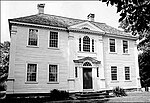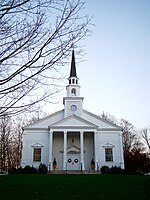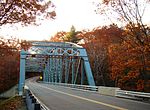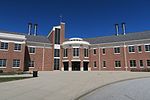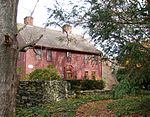Prudence Crandall Museum
1805 establishments in ConnecticutAfrican-American history of ConnecticutBiographical museums in ConnecticutCanterbury, ConnecticutDefunct schools in Connecticut ... and 15 more
Historic American Buildings Survey in ConnecticutHistoric district contributing properties in ConnecticutHistoric house museums in ConnecticutHouses completed in 1805Houses in Windham County, ConnecticutHouses on the National Register of Historic Places in ConnecticutMuseums in Windham County, ConnecticutNRHP infobox with nocatNational Historic Landmarks in ConnecticutNational Register of Historic Places in Windham County, ConnecticutPrudence CrandallSchools in Windham County, ConnecticutTourist attractions in Windham County, ConnecticutUse mdy dates from August 2023Women's museums in Connecticut

The Prudence Crandall Museum is a historic house museum, sometimes called the Elisha Payne House for its previous owner. It is located on the southwest corner of the junction of Connecticut Routes 14 and 169, on the Canterbury, Connecticut village green. It is designated a U.S. National Historic Landmark as Prudence Crandall House.
Excerpt from the Wikipedia article Prudence Crandall Museum (License: CC BY-SA 3.0, Authors, Images).Prudence Crandall Museum
South Canterbury Road,
Geographical coordinates (GPS) Address Nearby Places Show on map
Geographical coordinates (GPS)
| Latitude | Longitude |
|---|---|
| N 41.697916666667 ° | E -71.971944444444 ° |
Address
South Canterbury Road 5
06331
Connecticut, United States
Open on Google Maps
